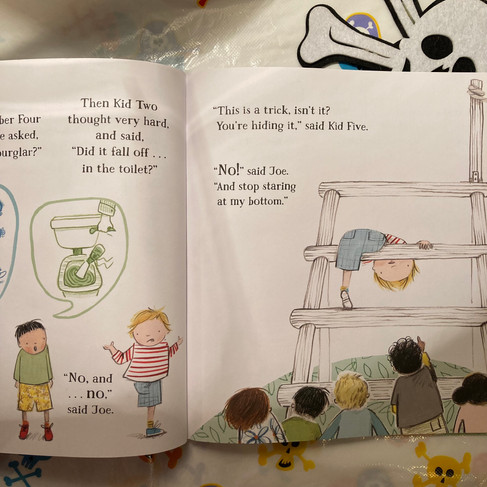What Happened to You? Reflecting on Disability in Children's Books
- JoAnne Saldanha
- Oct 6, 2021
- 2 min read

Joe was engrossed in playing pirates at the park. There were sharks and crocodiles he had to deal with, who were no match for a swashbuckling young chap like Joe. Engrossed in his buccaneering play, Joe reflects that sharks are easier to deal with than children he hasn’t met.
“You’ve only got one leg!”, a shout rings through the park, “ What happened to you?”
While Joe doesn’t feel like sharing his story, it does not stop other children from speculating all kinds of imaginative reasons, which leaves Joe overwhelmed and sad.
Fast forward to another scenario, where the same child joins in Joe’s game while asking, while sharing her name, and asking his. Pirate Joe springs into action and all the children join in, more interested in the sharks and crocodiles they are fighting, rather than a missing leg.
WHAT HAPPENED TO YOU? By James Catchpole, illustrated by Karen George, is an 'own voice' story which puts the reader in the shoe/s of children like Joe, helping us see just how a disabled child must feel when they are constantly questioned.
As adults, we are curious to know about what happened, but most know better than to ask or have the self-control not to. As I read this story, I realised that I really do not need to know. Am I able to look beyond the disability to the individual?
Children are innocent, curious and tactless…books like this one brings some awareness of how people we are curious about may feel with our questions or that they may not want to share, that they do not HAVE to share and neither do we HAVE to know.
The author makes a strong point with this story, that disabled child does not have to be a lesson or a teachable moment to others around them, while sharing a few tips for parents at the end of the book.
A few weeks ago the Catchpoles shared a post on the disability stereotypes in children's literature and it was quite a revelation.
Over the past year or so, I have been seeing this zestful, fiery need by educators to ‘teach’ children about ‘diversity ’,in a manner which only emphasis ‘otherness’. Reflecting on this for the past few months, I have been working on understanding diversity and the post above opened my eyes to my own stereotyped thoughts and have made me rethink quite a few.
This book is a gem.
As a mirror, it helps a disabled child see that it is ok to set boundaries about how much they want to share and as a window, this book throws light on how a disabled child may feel when being questioned about his disability.
It is a book that will make you rethink all you thought you were doing right to make your students/children more accepting of disability.
















Comments